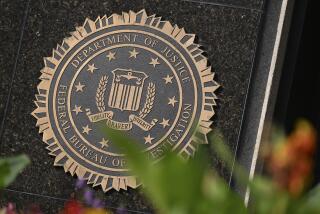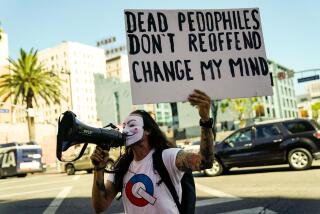On Internet, Conspiracy Theorists Take Diana’s Death and Run With It
There is a tiny corner of the Internet where the crash that took Princess Diana’s life was not a senseless act.
In the labyrinthine world of alt.conspiracy and alt.conspiracy.princess.diana, it all makes perfect sense.
“Anyone who doesn’t know that the order to murder Diana came from the Hanover/Windsor power structure is lacking an understanding of world affairs,” wrote one message poster. “A car wreck can very easily be engineered,” wrote another, who claimed that assassins were “acting on papal orders and financed by Du Pont.”
These are excerpts from just two of the more than 1,000 messages sent to these news groups--cyberspace bulletin boards where anyone with an Internet connection can post messages. In the conspiracy message groups, the word “accident” is almost never used unless preceded by “staged”; no action is innocent, and every utterance is subject to multiple interpretations.
The fact that the medium through which these theories are expressed is the Internet is pertinent only in terms of speed: Messages began appearing only minutes after it was confirmed that Diana was dead. But the non-cyber world eventually joined in.
On Tuesday, the BBC reported it had monitored a television speech by Libyan leader Moammar Kadafi in which he stated that British and French officials had conspired to kill Diana and her companion, Dodi Fayed, an Egyptian, “because they were annoyed that an Arab man might marry a British princess.”
It was inevitable that such sentiments would arise, say those familiar with the world of conspiracy theories.
“There is a need in people to find explanations for momentous events that are about as momentous as the events themselves,” said W. David Slawson, a professor of law at USC.
Slawson has experiences with conspiracy theories. As a young lawyer, he was on the staff of the Warren Commission that investigated the death of President John F. Kennedy.
“The idea that some driver who had too many glasses of wine could have caused an accident that killed a princess is just not believable to some people,” he said.
“Can someone post a list of the major discrepancies in this case?” asked one message writer. “Have I become so untrusting that I can’t even believe that an accident can really happen?”
The royals are, so far, the primary target of the theorists. “Previously, they had tried to silence [Diana] by offering her money,” wrote one message poster, “but she openly defied the queen, and her constant exposure in the media made them decide that an ‘accidental’ death would be more expedient.”
Playground equipment distributor Chris Barkley of Sydney, Australia, does not normally identify with the conspiracy community. But listening to radio broadcasts of news of the crash, he began to feel uneasy.
“There was an announcer saying, ‘I can’t understand why they left her in the car for so long. I was involved in an accident in France, and they practically did surgery on me on the side of the road,’ ” said Barkley.
He went to his computer and created “The First Diana Conspiracy Site” on the Internet’s World Wide Web.
“My thought was that it was a place where people could ask their own questions,” he said. So far, he has received almost 500 e-mail messages.
He has not posted all of them on the site. “There were a few from people who said it was all part of the Jewish-royalty conspiracy. I didn’t want those on,” he said. He was more interested in pointed questions, such as, “Only one ambulance to treat four injured people?” and the fact that CNN and the BBC quickly reported a possible involvement by paparazzi, “leaving virtually no room for other theories?”
On alt.conspiracy, no one restricts messages. Some assert involvement by the Irish Republican Army, the CIA, Islamic militants and the Freemasons (one message writer noted that the crash happened under a bridge, “traditionally built of stonework and thus a Masonic symbol”).
And there was one other target--Diana herself.
“Wouldn’t it be great if she made the final bid for freedom, entering the tunnel and disappearing forever with her lover,” wrote one, who imagined her now in a “secret location,” far from the public eye.
These messages drew some pointed rejoinders.
“Maybe the CIA kidnapped her and is keeping her on that island where they got JFK, Marilyn Monroe and Jimmy Hoffa. Probably needed a fourth for bridge,” said one reply.
Another message consisted of only one line. “What kind of person are you,” it asked, “if you can’t leave the princess alone after she died?”
More to Read
Sign up for Essential California
The most important California stories and recommendations in your inbox every morning.
You may occasionally receive promotional content from the Los Angeles Times.











